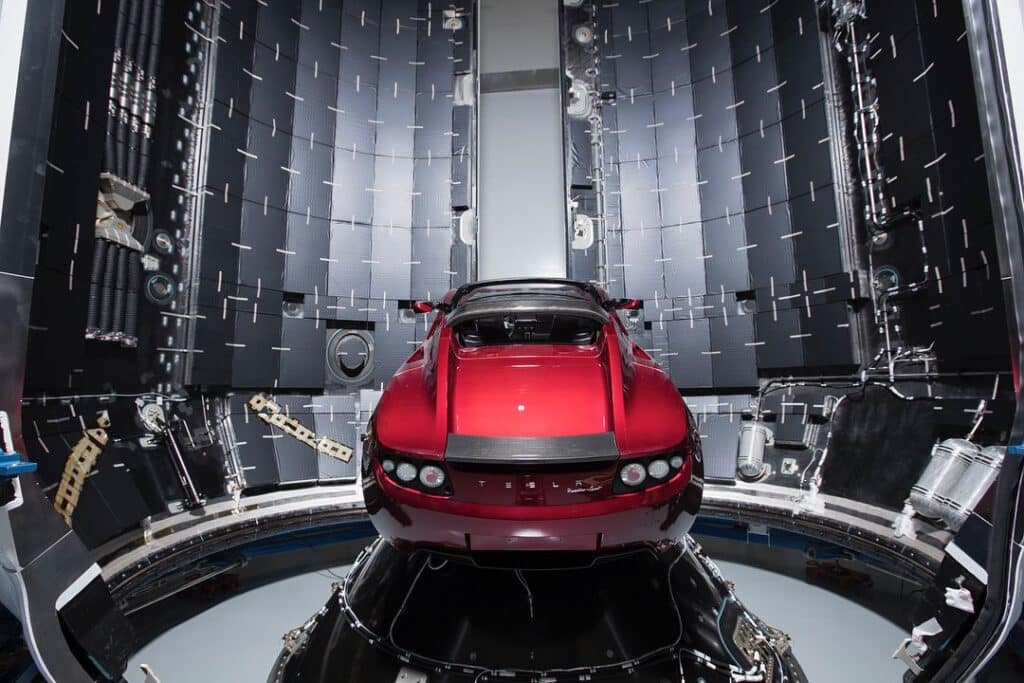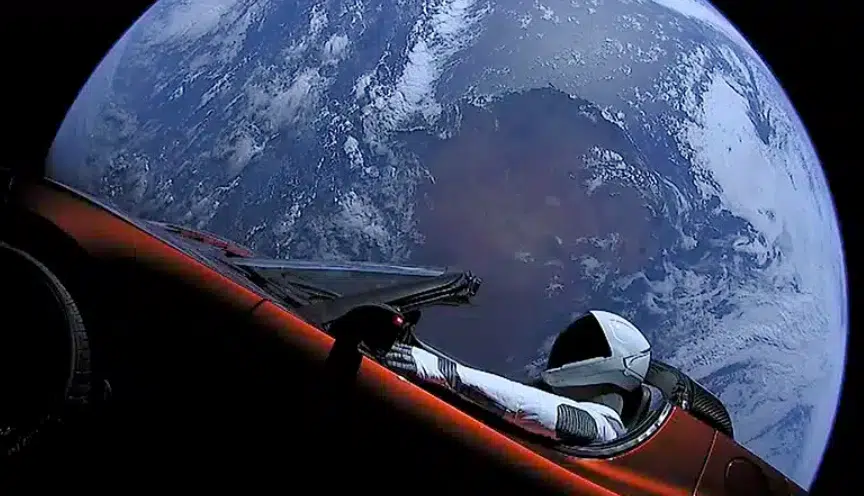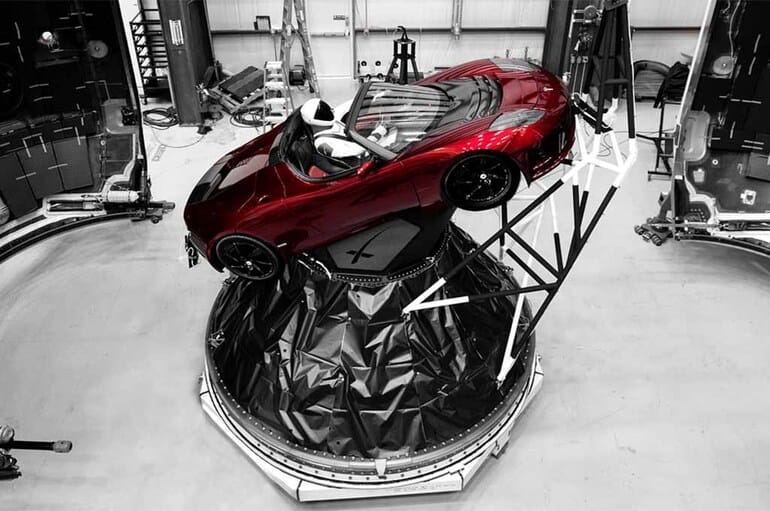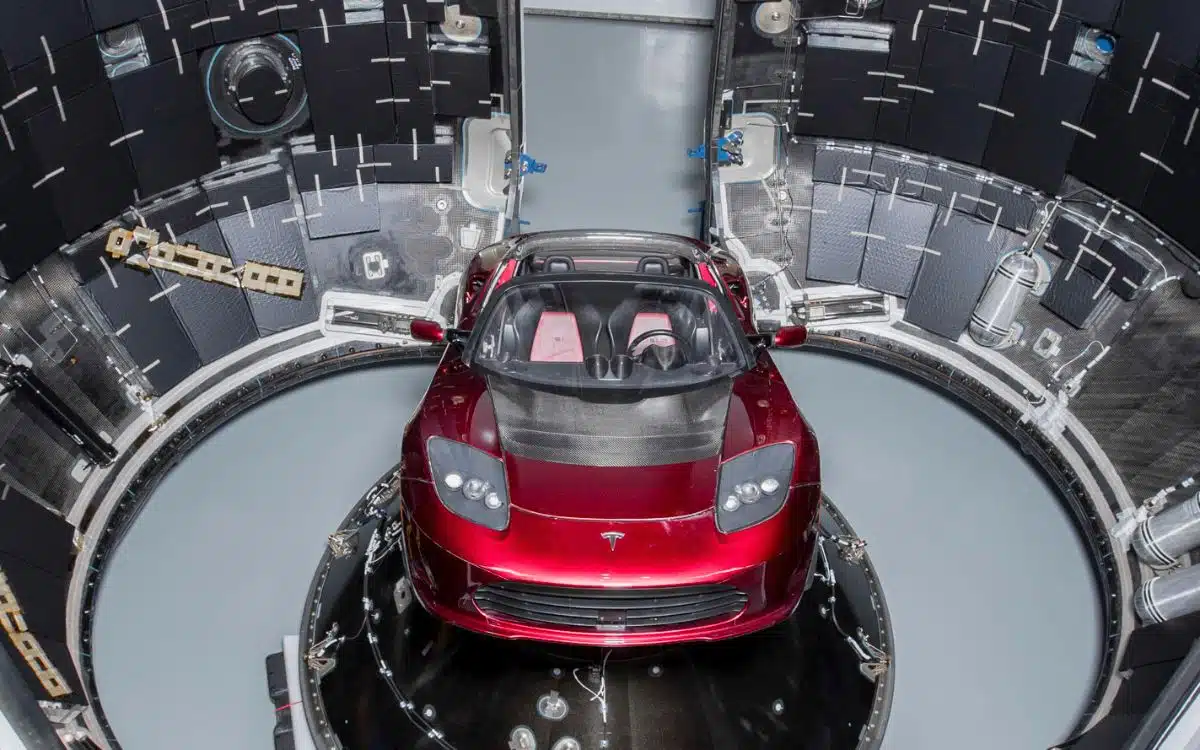This is how the cherry red Tesla Roadster was launched into space
- Old images have revealed how Tesla’s Roadster was launched into space
- It was protected by a massive carbon fiber structure
- Since its launch in 2018, it’s believed to have done 3 loops around the sun
Published on Feb 09, 2025 at 4:00 PM (UTC+4)
by Grace Donohoe
Last updated on Feb 06, 2025 at 1:49 PM (UTC+4)
Edited by
Kate Bain
Old photos have come to light revealing exactly how Elon Musk launched the Tesla Roadster into space.
The car was sent into orbit Mars on February 6, 2018.
Now, some seven years later, the cherry red Roadster is still up there.
So too is its dummy driver, who Musk named the ‘Starman in Red Roadster’.
DISCOVER SBX CARS: The global premium car auction platform powered by Supercar Blondie
Tesla Roadster launched deep into space
The Tesla Roadster was launched into space on SpaceX’ Falcon heavy rocket – capable of carrying a mighty 37,000 pounds into the abyss.
The cherry red Tesla was packed inside a huge carbon fiber structure so it wouldn’t be damaged during the launch.

“Test flights of new rockets usually contain mass simulators in the form of concrete or steel blocks. That seemed extremely boring,” SpaceX founder Elon Musk wrote in a previous Instagram post.
“Of course, anything boring is terrible, especially companies, so we decided to send something unusual, something that made us feel.
“The payload will be an original Tesla Roadster, playing Space Oddity, on a billion year elliptic Mars orbit.”
Since then, it’s estimated to have completed more than three loops around the sun.
It’s now also estimated to be a long 203 million miles from planet Earth.

How it’s traveling
Following the launch of the Falcon, it spent six hours orbiting planet Earth.
It was then inserted into an ‘interplanetary solar orbit’.
This meant it could explore the asteroid belt.
If you fancy catching a glimpse of it, you could be in luck, but you’ll have to be patient.

Your best bet at seeing the Roadster will be in 2091 – some 66 years away.
In 2091, experts expect it to pass by within a couple of hundred miles of our planet.






